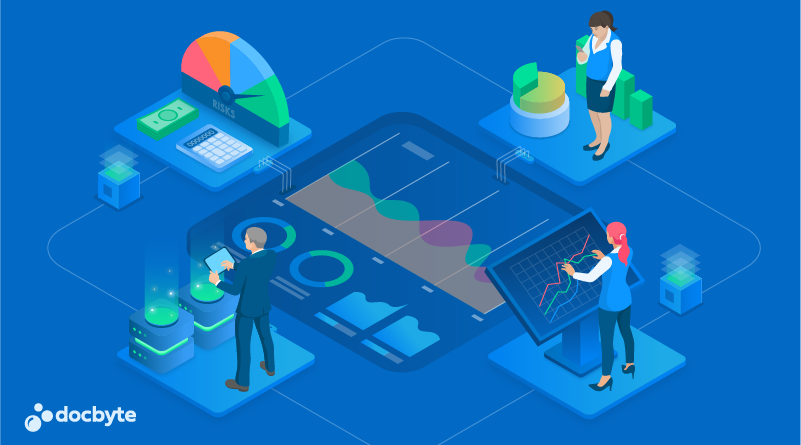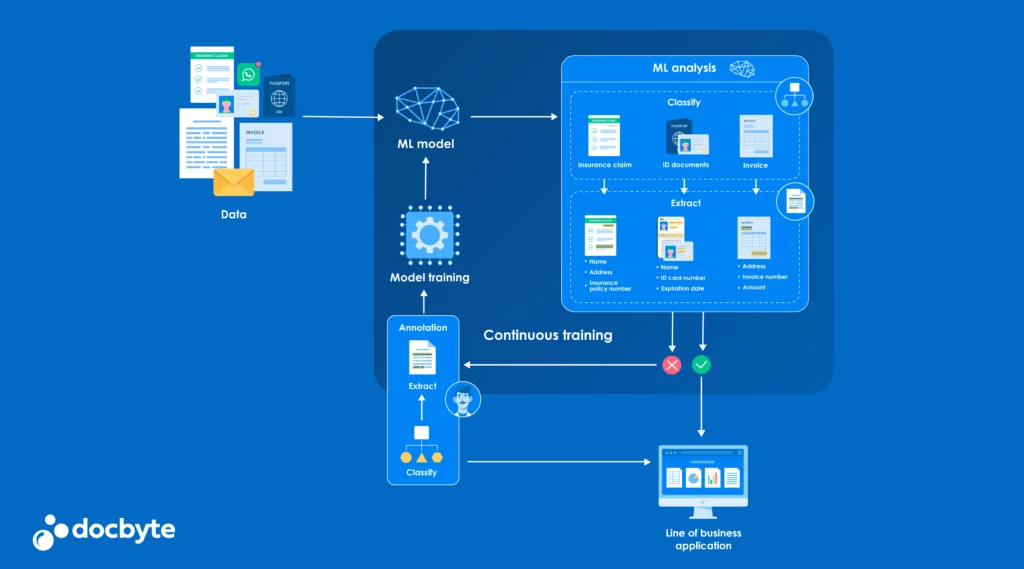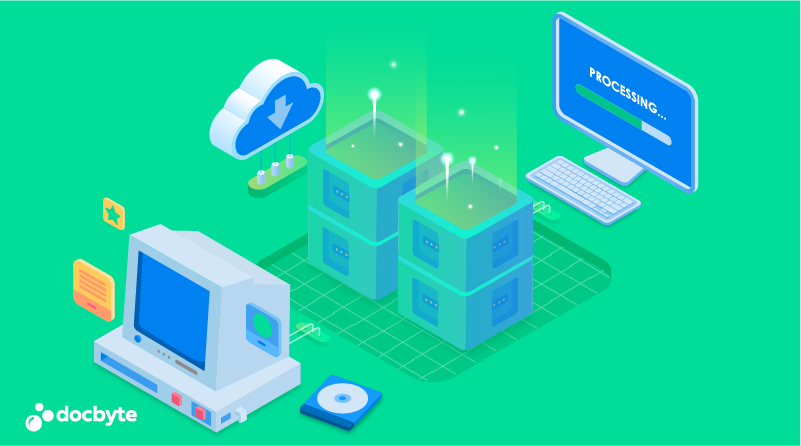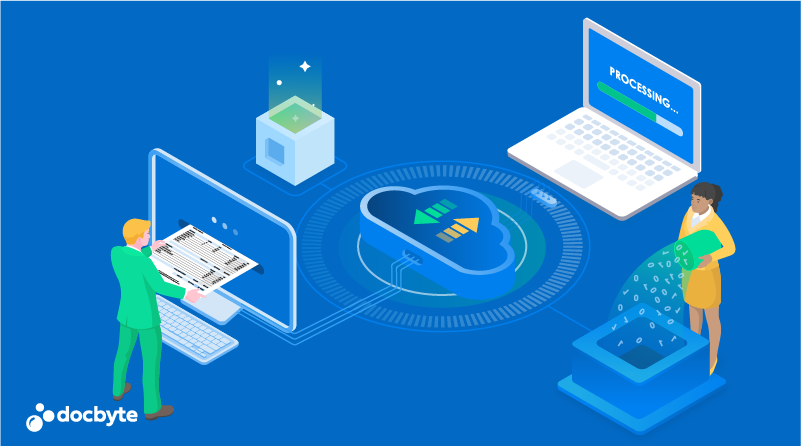What is a digital enterprise? A question buzzing across the internet. To digitalise a firm means using digital technologies to turn it into a digital enterprise. The primary goals of digitisation are increased revenue and new opportunities for value addition.
By utilising globally distributed digital assets and organisational resources, digitalisation, in its broadest sense, changes an enterprise’s initial business model and opens up various business opportunities by integrating the intangible processes of production planning and product development with actual production and operational support. Let’s dive into digital enterprise, its multiple aspects, and the digitisation process.
What is Digital Enterprise?
Nowadays, everyone is operating a digital business in the era of remote work. However, in reality, top business leaders define going digital differently. As a result, priorities can differ regarding technology adoption and transformation.
Anyone wishing to launch or adopt a digital enterprise strategy for their existing business must stay on top of the most recent information and developments surrounding digitalisation.
Markets and Markets projects that the size of the digital transformation market will increase from $594,4 billion in 2022 to $3 144,9 billion in 2026 at a compound annual growth rate of 19.1%. This is the right time to learn about digital enterprising to take your business to new heights.
Characteristics of a Digital Enterprise
Machine Learning, Artificial Intelligence, Robotic Process Automation(RPA), Virtual and Augmented Reality, Quantum Computing, Blockchain, Edge Computing, the Internet of Things (IoT), 5G, etc., are a few of the most widely used digital technologies. Businesses must adopt these technologies to solve the twenty-first-century challenges and become digital enterprises.
For the most part, digital enterprises depend on technology to function and expand. Enterprise digital strategy involves:
- Data collection and document archiving to enhance business intelligence.
- Using AI to enhance the consumer experience.
- Automating workflows with task management apps and productivity software.
- Mindset centered on technology and organisational structures built with agility and speed.
What makes a digital enterprise efficient?
Only downloading a few apps alone does not turn a business into a digital enterprise. A digital transformation is a gradual transition from manual processes to a technology-driven, customer-focused business model.
Building a digital enterprise means viewing everything from the ground up, including the machinery, processes, finished goods, entire manufacturing process, and overall system performance. Not just the hardware but also, and perhaps more importantly, the software and data models.
Digital enterprise works to turn different kinds of data into insightful information. Hence, digitalisation impacts significant aspects, including back-end management and maintenance, customer service, and employee experience.
Digital Enterprises Increase Profit Margin
These days, digital enterprises generate increased revenue and new opportunities for value addition. Many businesses are currently in the process of digitising. Prominent companies have already implemented digital enterprise strategy and have had great success in terms of profits and sustainable clientele.
For instance, one of the main objectives of European Union policy for 2022-2023 has been the digitalisation of corporate companies. It is believed that the competitiveness of European businesses in the high-tech and digital sectors is crucial to ensuring the EU’s worldwide competitiveness in this century.
The goal of the EU’s NextGenerationEU economic recovery package and initiatives like the Digital Single Market is to encourage the development of new high-tech industries and promote digital enterprises in Europe.
The Nordic member states, Denmark, Sweden, and Finland, are the countries within the European Union with the highest business rates for 2022-23, ranging between 75%-100%, leading to extremely high levels of digital intensity in everyday operations.
You can also seamlessly digitalise and automate your data preservation actions with digital preservation software.
Digital Enterprise Business Solutions
Businesses need to adopt the idea of digital enterprise in this age of digital transformation, where digitising business models is essential to remain effective and competitive. A significant force in this change is Docbyte, which provides digital enterprise solutions that neatly fit into the more significant idea of digitising business models and processes. Following are the trust solutions that Docbytes delivers to businesses to help them become digital enterprises.
1. Document processing in the digital enterprise
Document processing is a vital component of operations in the digital enterprise environment. Automation solutions offered by Docbyte help businesses retrieve pertinent information, confirm legitimacy and recognize various documents automatically.
2. Email handling and digital mailroom
The email handling and digital mailroom solutions fit into the digital enterprise architecture. Such solutions are suitable for speeding up incoming emails and creating a processing environment that has multiple communication channels. Accuracy is guaranteed by machine learning, and the capacity to manage any kind of email enhances the variety of channels for communication available to a digital business.
3. Training for ever-adapting digital solutions
Adaptability is essential in a digital enterprise. The way that Docbyte uses machine learning to train continuously fits perfectly with digital solutions’ dynamic nature. This creative enterprise digital strategy ensures that document processing solutions remain at their best over time, continually improving extraction rates and keeping a competitive advantage in the rapidly changing digital market.
4. Classification and Extraction
Optimising mailrooms and web applications for document classification and data extraction through machine learning is a perfect fit for the digital enterprise’s objective of improving customer experience while cutting costs. Docbyte’s solutions provide a competitive edge through continuous training, synthetic data, and the capacity to process complex documents in a digitally transformed business model where speed and efficiency are crucial.
5. Customer Onboarding:
A vital component of the digital enterprise is digitising the entire customer onboarding process. This goal perfectly aligns with Docbyte’s solution, which covers document collection, signing, archiving, and identification. Because the answer is modular, businesses can implement it at their own pace, aligning with a digital enterprise’s adaptable and flexible characteristics.
The range of products from Docbyte facilitates the digitization of business processes and models by integrating neatly into a digital enterprise’s framework. Docbyte handles critical elements for instance, email management, customer service, and document processing, to create a digital business model that is more efficient, responsive, and automated.
Digital Enterprise Strategies
Developing and implementing digital enterprise strategy in today’s fast-paced business climate necessitates thoroughly comprehending the interactions between organisational culture, technology, and market dynamics. Discussed below are factors that contribute to the success of a digital business.
1. Invest in technology infrastructure
-
Using cloud technologies
Infrastructure investments in technology extend beyond traditional IT. Organisations have the option of public, private, or hybrid cloud models. Cloud computing offers a platform for implementing machine learning and AI The major two benefits are easier collaborations and improved data accessibility .
-
Implementing edge computing
The need for edge computing to process data closer to the source increases as data volumes rise. By utilising edge computing to lower latency and improve real-time processing capabilities, digital enterprises can optimize performance in domains like augmented reality (AR), autonomous systems, and the Internet of Things (IoT).
-
Data management and storage
In the digital age the management and storage of data is of high significance. Advanced analytical tools and distributed databases help digital enterprises make informed decisions.. Hence, storing and managing data is crucial in this regard.
2. Creating a digital roadmap
-
Clear objectives and KPIs
A deep comprehension of the organization’s goals is the foundation of any successful digital roadmap. Establishing clear key performance indicators (KPIs) that align with strategic objectives guarantees that digital endeavors directly impact business prosperity. Departmental cooperation is required for this process to pinpoint opportunities, problem areas, and areas that need improvement to plan digital enterprise strategy.
-
Cross-functional teams
For a digital transformation to be successful, silos must be broken down, and cross-functional teams must collaborate. Development and operations teams should seamlessly coordinate using approaches like DevOps in the digital roadmap. By working together with digital enterprise teams, we can improve overall organisational agility and expedite the delivery of digital solutions.
3. Adopting agile methodologies
It is a project management methodology that emphasizes ongoing improvement and cross-functional collaboration. It breaks down large projects into smaller chunks and leads groups through planning and assessing tasks in succession.
Despite having their roots in software development, agile approaches have many uses outside of IT. Adopting Agile principles across the digital enterprise promotes a culture of responsiveness, adaptability, and continuous improvement. Agile project management techniques, like Scrum and Kanban, increase adaptability, deliver values in increments, and improve project transparency.
4. Staying ahead of tech trends
-
Constant technological evaluation
It takes a proactive approach to ongoing technological assessments to stay ahead of the curve in tech. With extensive market trends analysis businesses can conduct frequent technology audits. For example, participating in innovation ecosystems—technological alliances, accelerators, and industry forums—offers insightful information and cooperative opportunities.
-
Establishing a culture focused on technology
To cultivate a culture focused on technology in a digital enterprise, staff members must be encouraged to value adaptability and lifelong learning. Through Information exchange and cross-functional training, an organisation can build a workforce knowledgeable about the most recent technical developments and capable of bringing creative solutions.
Conclusion
A digital enterprise requires strategic use of technology for productivity and long-term success. Investing in modern technology like cloud computing and creating a thorough plan for digital transformation will help businesses scale their IT infrastructure, which is also at a pay-as-you-go model. Adopting flexible work arrangements like Agile and staying current with emerging technologies is essential to thriving as a digital enterprise.
Since they use data wisely, digital enterprises are more efficient at managing operations and providing faster and better customer service. As successful cases like those in the European Union demonstrate, this move to digital is more than a passing trend; it increases profits and maintains a company’s competitiveness.







